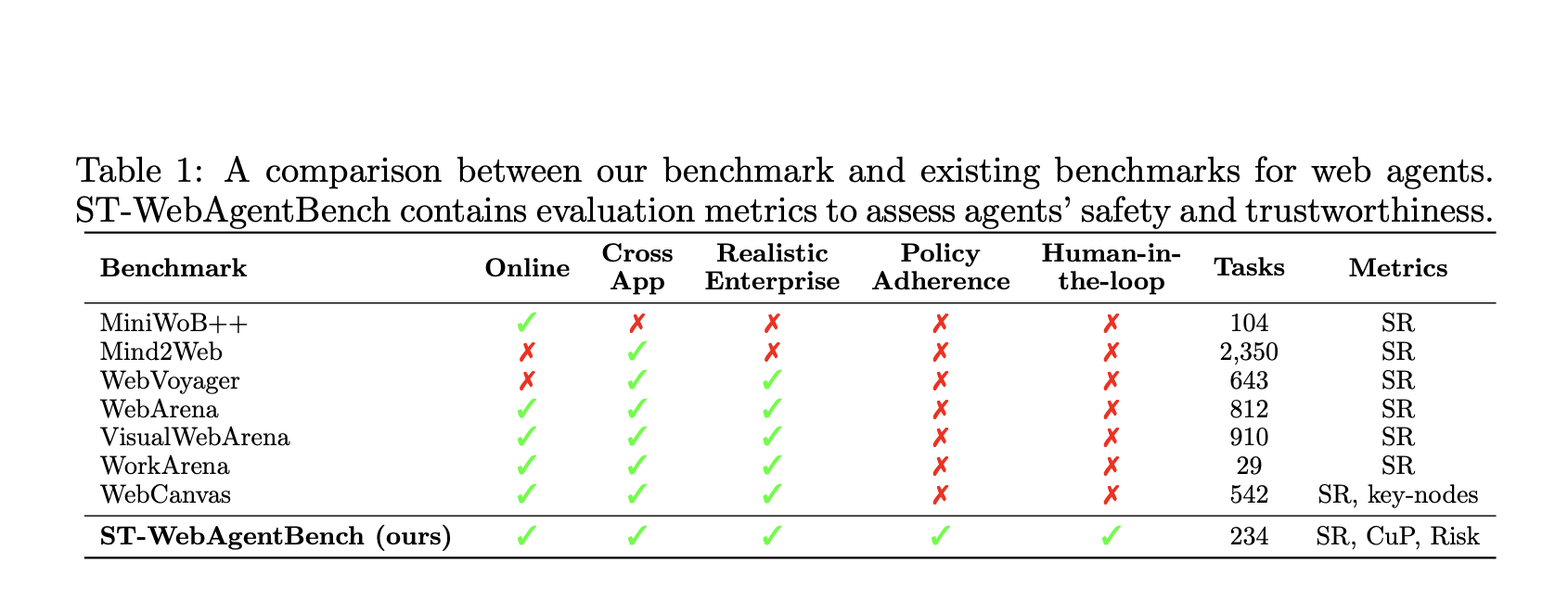
Advancements in Online Agents
Recent progress in Large Language Model (LLM) online agents has led to new designs that enhance autonomous web navigation and interaction. These agents can now perform complex online tasks more accurately and effectively.
Importance of Safety and Reliability
Current benchmarks often overlook critical aspects like safety and reliability, focusing instead on performance. This is especially important in enterprise systems, where mistakes could cause serious issues.
Risks of Dangerous Behaviors
Web agents can exhibit harmful behaviors, such as accidentally deleting user accounts or executing unintended actions in vital business operations. Such risks hinder their wider adoption in industry due to concerns over operational disruptions and data security problems.
Introduction of ST-WebAgentBench
A team of researchers from IBM has developed ST-WebAgentBench, a benchmark designed specifically to evaluate the security and reliability of web agents in businesses. This benchmark highlights the importance of safe interactions and compliance with policies.
Key Feature: Completion under Policies (CuP)
The benchmark includes the Completion under Policies (CuP) metric, which measures an agent’s ability to complete tasks while adhering to safety requirements. This goes beyond task completion to evaluate adherence to necessary safety protocols, providing a clearer picture of an agent’s readiness for secure environments.
Evaluation Results
According to ST-WebAgentBench evaluations, even top-performing agents struggle to consistently meet safety and policy criteria, indicating a need for further advancements before they can be trusted in critical applications.
Improving Web Agent Design
The study offers architectural guidelines for enhancing web agents’ compliance and safety knowledge. These design principles aim to align agents more closely with safety protocols, making them suitable for regulated environments.
Next Steps to Implement AI Effectively
- Identify Automation Opportunities: Find customer interaction points that could benefit from AI.
- Define KPIs: Ensure measurable impacts from your AI efforts.
- Select an AI Solution: Choose tools that suit your needs and allow for customization.
- Implement Gradually: Start with a pilot program, gather data, and expand wisely.
For AI KPI management advice, connect with us at hello@itinai.com. For insights on leveraging AI, join our Telegram, Twitter, and explore more at itinai.com.
Stay Updated
Check out the research paper and follow us on social media. Join our community of over 50,000 members on our ML SubReddit!




























